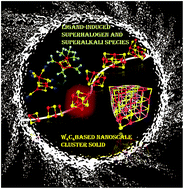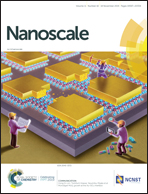Polymeric tungsten carbide nanoclusters: structural evolution, ligand modulation, and assembled nanomaterials†
Abstract
Seeking novel superatoms with tunable electronic and magnetic properties has attracted much interest due to their potential application in cluster assembly nanomaterials. By employing density functional theory (DFT) calculations, the recently observed superatomic WC cluster was adopted as the basic unit to construct larger polymeric clusters, namely (WC)n (n = 2–7), and their structural evolution was explored to understand the growth pattern of these superatomic clusters into nanoscale materials. An unusual odd–even pattern in structural evolution was disclosed, in which the (WC)2 unit is considered as the basic building block. Moreover, W4C4 is found to possess a cubic structure, based on which the CO and PH3 ligands were attached to examine their ligation effects on W4C4. Theoretical results show that the electronic properties of W4C4 can be dramatically altered during the ligation process. Intriguingly, the continuous attachment of CO and PH3 ligands strongly increases and decreases the electron affinities (EA) and ionization potentials (IP) of the ligated W4C4 clusters, respectively, leading to the formation of superhalogen and superalkali species with high magnetic moments. The observed ligand induced strategy highlighted here could serve as an effective way to tune the electronic and magnetic properties of clusters resulting in the formation of novel superatoms. Finally, studies on the geometrical and electronic structures of the W4C4 cluster solid unveil its special 3-D cubic honeycomb geometry and metallic properties with predominant contribution from the 5d of W, which may have potential applications in electro-catalysis.



 Please wait while we load your content...
Please wait while we load your content...